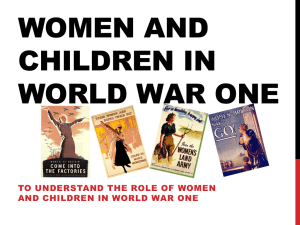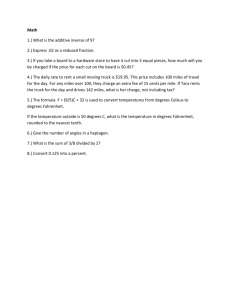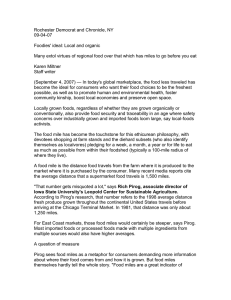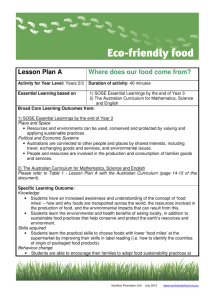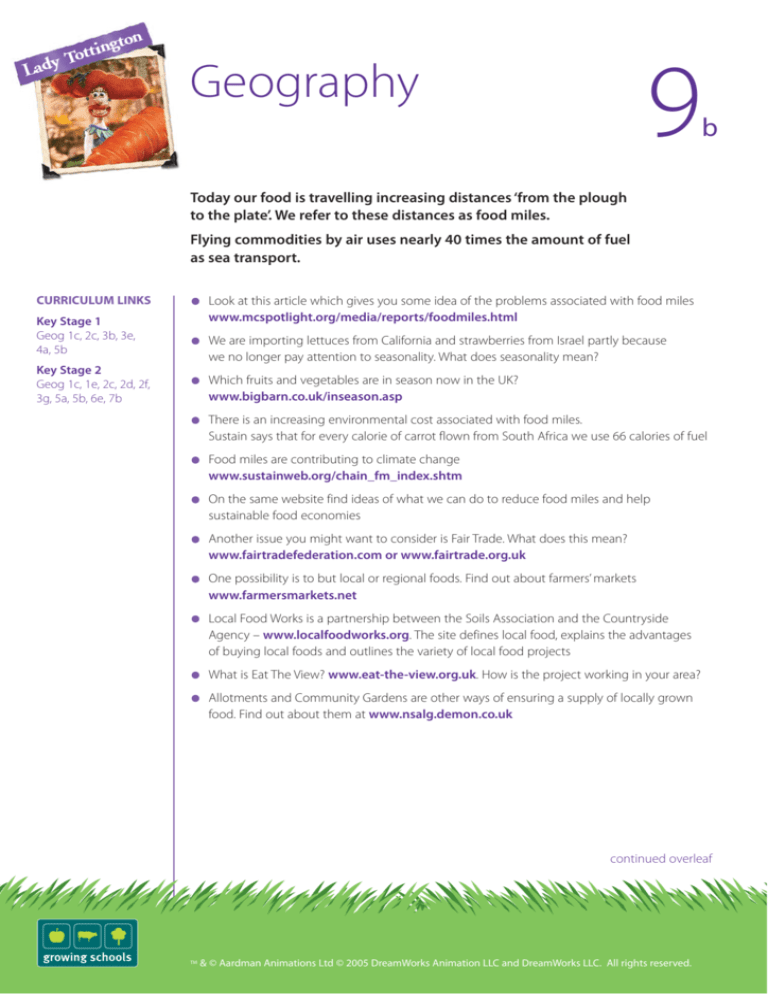
on
ingt
t
t
o
T
Lady
9
Geography
b
Today our food is travelling increasing distances ‘from the plough
to the plate’. We refer to these distances as food miles.
Flying commodities by air uses nearly 40 times the amount of fuel
as sea transport.
Look at this article which gives you some idea of the problems associated with food miles
www.mcspotlight.org/media/reports/foodmiles.html
CURRICULUM LINKS
Key Stage 1
Geog 1c, 2c, 3b, 3e,
4a, 5b
We are importing lettuces from California and strawberries from Israel partly because
we no longer pay attention to seasonality. What does seasonality mean?
Key Stage 2
Geog 1c, 1e, 2c, 2d, 2f,
3g, 5a, 5b, 6e, 7b
Which fruits and vegetables are in season now in the UK?
www.bigbarn.co.uk/inseason.asp
There is an increasing environmental cost associated with food miles.
Sustain says that for every calorie of carrot flown from South Africa we use 66 calories of fuel
Food miles are contributing to climate change
www.sustainweb.org/chain_fm_index.shtm
On the same website find ideas of what we can do to reduce food miles and help
sustainable food economies
Another issue you might want to consider is Fair Trade. What does this mean?
www.fairtradefederation.com or www.fairtrade.org.uk
One possibility is to but local or regional foods. Find out about farmers’ markets
www.farmersmarkets.net
Local Food Works is a partnership between the Soils Association and the Countryside
Agency – www.localfoodworks.org. The site defines local food, explains the advantages
of buying local foods and outlines the variety of local food projects
What is Eat The View? www.eat-the-view.org.uk. How is the project working in your area?
Allotments and Community Gardens are other ways of ensuring a supply of locally grown
food. Find out about them at www.nsalg.demon.co.uk
continued overleaf
TM
& © Aardman Animations Ltd © 2005 DreamWorks Animation LLC and DreamWorks LLC. All rights reserved.
NOTES
Case study: Stibbington Environmental Centre
Stibbington Environmental Centre conducts a shopping survey with pupils to find out where
food sold in local shops comes from. They take the children out in small to medium sized groups
to their local town and ask them to investigate the origins of their food. This sometimes requires
cooperation from the local shop keepers so they choose a time when the shops are quiet.
The centre has produced a large map of the world and the children mark where all the different
foods and drinks they have seen in the local shops originate from (you could also ask children to
bring in labels from home). Asking pupils to measure the distance from where the food was
originally produced to where it is being sold in their local shops illustrates the concept of food
miles. The class can then discuss the reasons why food is transported from different parts of the
country, and from around the world, and what impact this has on Fair Trade.
Discuss how:
Different climates are suitable for different crops eg. bananas, coffee
Refrigeration, preservatives and air freight enable foods to be transported
long distances
Consumers want to eat seasonal foods e.g. lamb, strawberries and carrots all year round,
and therefore shops source these things from around the world
For more information visit: www.teachernet.gov.uk/casestudies and key in ‘Stibbington’ in the
search facility.




